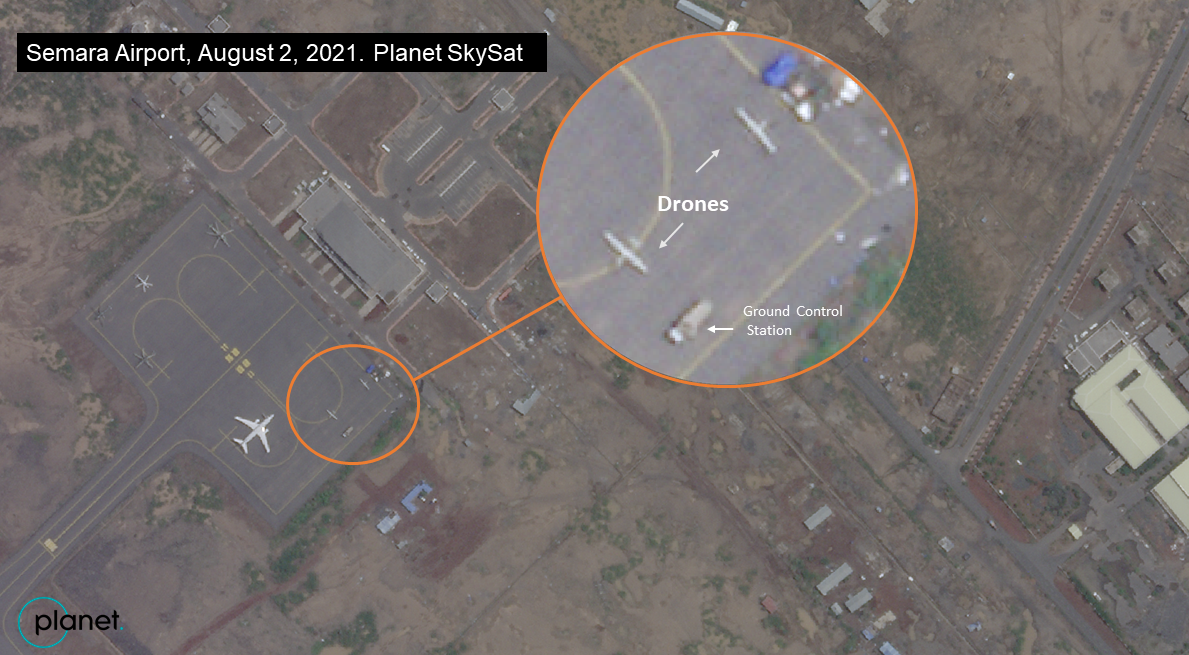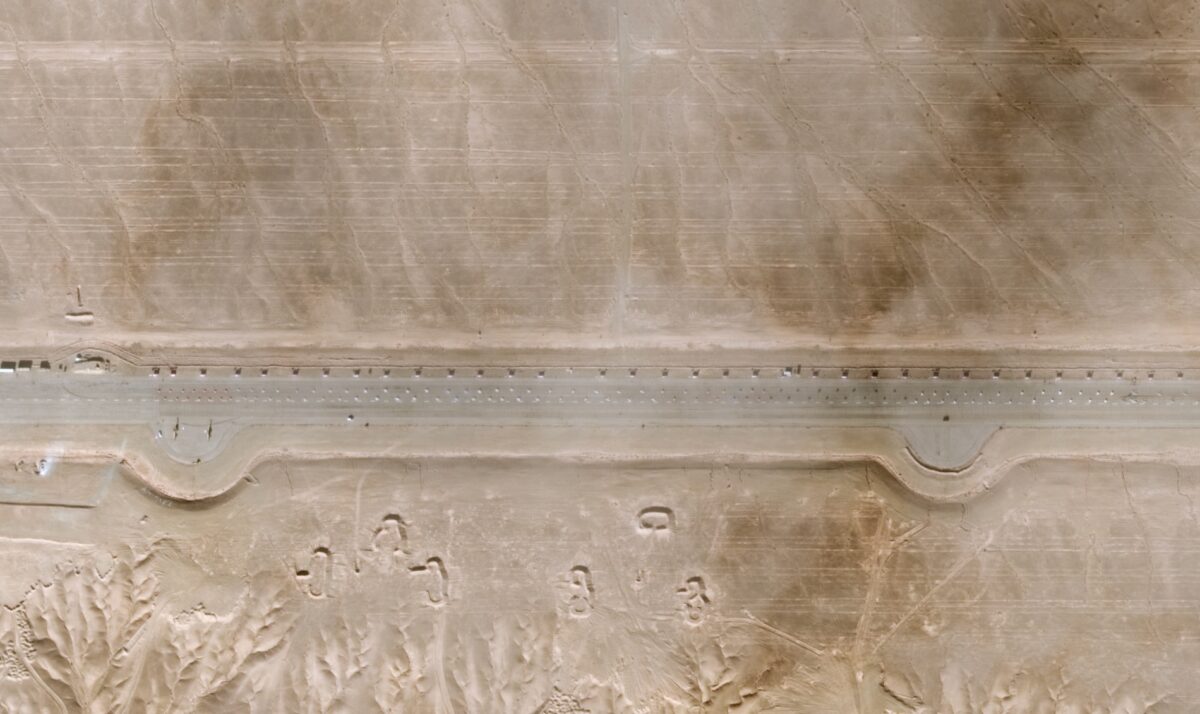How to Digitally Verify Combatant Affiliation in Middle East Conflicts
The spread of social media and smartphones throughout the Middle East has created a truly enormous amount of publicly available documentation of conflicts in the region. Whether in the form of videos or photos, from combat footage to potential war crimes — a lot of things are routinely documented and uploaded to various sites like Facebook, Twitter, and YouTube.
These photos and videos present a double-edged sword to journalists, analysts, and others researching these conflicts.
On one hand, primary source footage and photos can allow journalists to uncover war crimes and other human rights abuses.
On the other hand, however, misattributed photos and videos can be used as a form of disinformation or misinformation to manipulate audiences into false conclusions.
For example, a video of detainees being tortured was posted on Twitter, with the poster claiming that the video depicted pro-government forces torturing a civilian in Eastern Ghouta, Syria. As pro-government forces have tortured prisoners across the country on multiple occasions, new footage of torture by pro-government forces would not be unusual.
However, on a closer glance certain aspects of the video seem off. For one, the prisoner and the captors appear to be communicating in Urdu, a South Asian language that isn’t commonly spoken in Syria. If the prisoner was indeed Syrian, he would not be speaking in Urdu. Using this clue, Dirar Khatab, a journalist with Verify-Sy — a non-profit that verifies video and footage from the Syrian conflict — determined that the video did not take place in Syria, by finding that the same video had been uploaded over a year ago, possibly from Pakistan.
With this context in mind, journalists, analysts, and researchers need to find ways to verify whether the footage or photos they are viewing are accurately described by the accompanying title and description. Bellingcat has an extensive list of guides and tools that can be used to verify open-source information.
This guide will specifically cover how one can determine what side a combatant belongs to in photos or videos from Middle Eastern conflicts, a key step in verifying the authenticity of videos and photos from conflict zones in the region.
Military Uniforms
Military uniforms can provide clues about who a combatant is and what group they are affiliated with. For example, camouflage patterns on military uniforms are often affiliated with a particular country, military force or even non-state actor.

The unidentified combatant on the right is likely wearing Iranian IRGC Basij camouflage (Source)

An example of IRGC Basij camouflage from Camopedia (Source)
In this example of a group of pro-government forces in Syria, the combatant on the far right is wearing a different type of camouflage from the rest of the combatants. You can easily identify his uniform by going to Camopedia, an open-source database of camouflage patterns across the world. By going through the database, you can see that the combatant’s uniform appears to roughly match an Islamic Revolutionary Guard Corps (IRGC) Basij pattern from Iran. This could indicate that the combatant has some sort of affiliation or connection to IRGC Basij forces.
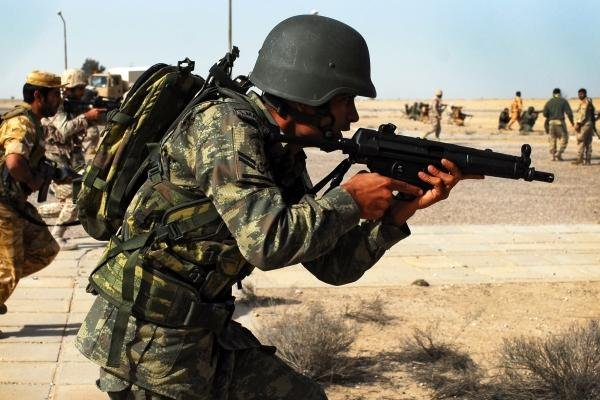
This combatant training on Failaka Island, Kuwait is a member of the Turkish Armed Forces based on his camouflage (Source)
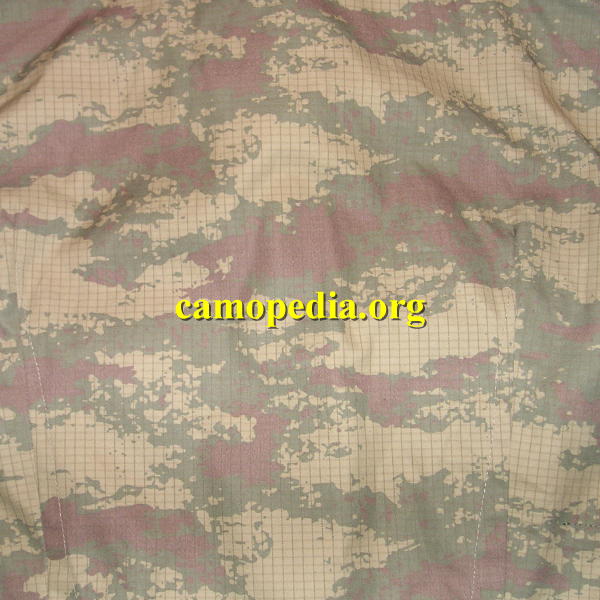
An example of camouflage used by the Turkish Armed Force (source)
In addition to Camopedia, the Index of Camouflage Patterns of the World can be a helpful resource in identifying uniforms. The index, however, does not include example pictures. Nonetheless, it may be helpful in identifying more obscure camouflage patterns not listed on Camopedia. It is important to note that a uniform alone is not always enough to determine the affiliation of a combatant, especially given the proliferation of camouflage uniforms on the black market. Other pieces of evidence often need to be used alongside the uniform to identify a combatant’s affiliation.
Patches and Insignia
Military patches and insignia denoting rank or unit affiliation are a great way to verify or identify a combatant’s affiliation. The most obvious first step would be to Google any words or phrases found on the insignia. (In case you do not read Arabic but want to decipher a patch or insignia with Arabic inscription, Bellingcat has a guide for specifically that.) Insignia without writing can often be identified by searching through the International Encyclopedia of Uniform Insignia. Wikipedia’s List of Comparative Military Ranks can also be quite useful in identifying insignia.

The shoulder insignia on this Iraqi military officer indicates he is a Brigadier General (Source)
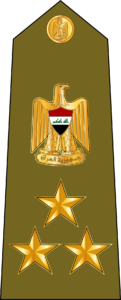
An Iraqi Army Brigadier General shoulder insignia (Source)
Using this method, it was possible to verify that Iraqi Military officer above is a Brigadier General in the Iraqi Army. Unfortunately, neither Wikipedia nor the International Encyclopedia of Uniform Insignia includes patches and insignia from non-state actors, making identification of insignia from militias and the like particularly challenging. When using patches to identify combatants note that special forces operating in the Middle East often wear patches of groups they are embedded with or as a form of misdirection to obscure their true identity.

A combatant wearing what appears to be a Hezbollah patch in Syria (Source)
For example, the combatant in the above photo has what appears to be a yellow Hezbollah patch on his uniform. At an initial glance, this would suggest the combatant is affiliated with Hezbollah. However, this combatant is actually a member of the Russian military, based on his equipment and uniform. His wearing of a Hezbollah patch could be an attempt to hide his true affiliation, or it could be an attempt to show solidarity with an organization that Russia is fighting alongside. This example shows how even patches and insignia are not a guaranteed method of identifying combatants in the Middle East.
Arms and Equipment
Identifying arms or equipment used by a combatant can reveal a lot about their affiliation. Certain weapon systems are more likely to be found within a specific country and among that country’s military forces. Small arms — meaning rifles, sub-machine guns, and handguns — often identify more than just what military a combatant is affiliated with, sometimes they can even identify what unit a soldier is a part of.

A combatant holding what appears to be a Tabuk sniper rifle (Source)

A clear shot of a Tabuk sniper rifle (Source)
For example, this fighter, while lacking any uniform or insignia that would identify what side he belongs to, is holding a Tabuk Sniper rifle, an Iraqi 7.62x39mm designated marksmen rifle. This clue suggests that the fighter may be in Iraq, something that was later confirmed by using reverse image searches that revealed he was part of an Iraqi militia.
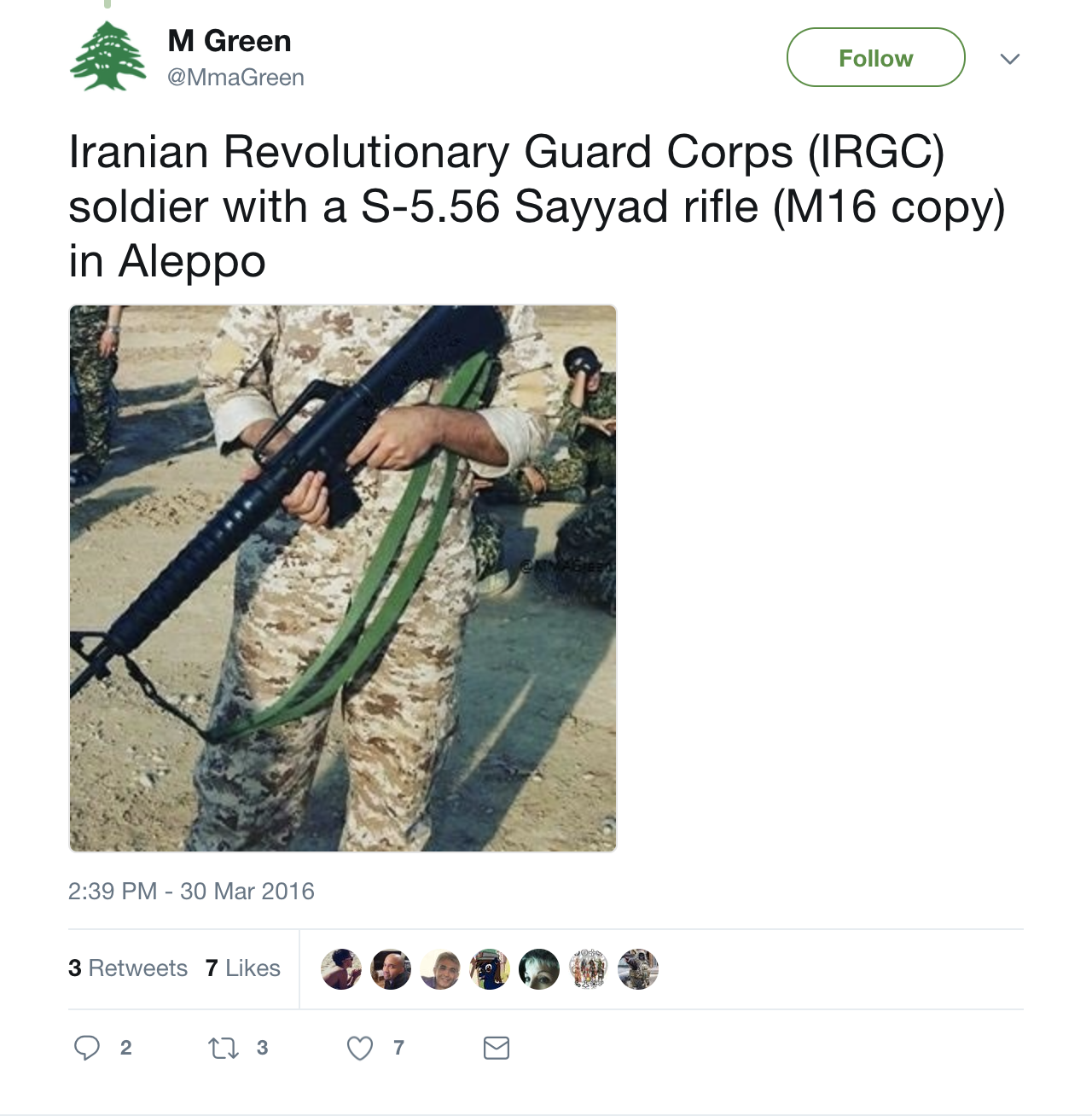
The combatant in this photo is using an S-5.56 Sayyad rifle, suggesting that he has an affiliation with Iran’s military. (source)
The presence of a Sayyad 5.56 rifle, an Iranian clone of the Chinese Norinco CQ, with a combatant, as seen in the tweet above, suggests the combatant has ties to Iran. It is important to note that using small arms to identify a combatant’s affiliation is not a surefire approach, particularly given the proliferation of small arms throughout the Middle East. Ideally, multiple clues, such as uniforms or insignia, used in combination with small arms identification, will confirm a combatant’s affiliation. To identify small arms you can use Small Arms Survey’s Weapon ID database to search for small arms by caliber, type, location and more.
Conclusion
Overall, identifying or verifying combatant affiliation in the Middle East can vary in difficulty. At times a simple reverse image search is sufficient to determine what side a combatant is affiliated with. Other times it can be quite challenging, requiring knowledge of languages and culture, open-source research skills, geolocation, weapons and arms identification and more. This guide goes over only a few of the ways you can verify combatant affiliation. For beginners and others new to the field of digital forensics, identifying the uniform, insignia, and arms used by a combatant can often reveal what side of a conflict, if not what specific group the combatant is part of.
Verifying what side a combatant is from can help journalists, law enforcement, and researchers identify the perpetrators of war crimes. For example, it has been used to identify looting military forces in Syria. Additionally, combatant verification can be used to fact check stories that may be based on inaccurate information. Given the large amount of disinformation and misinformation that is present on the internet, digital verification is an essential step when conducting open-source investigations on conflicts in the Middle East.
Have a suggestion or want to get in touch? Feel free to leave a comment below. You can also contact the author through this form.
[contact-form to=”raokomar@gmail.com” subject=”Bellingcat”][contact-field label=”Name” type=”name” required=”1″][contact-field label=”Email” type=”email” required=”1″][contact-field label=”Message” type=”textarea” required=”1″][/contact-form]

